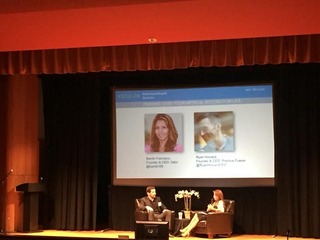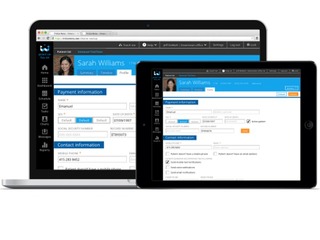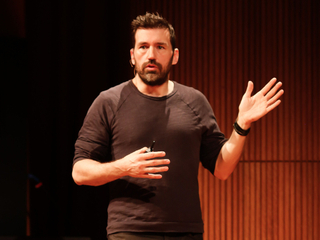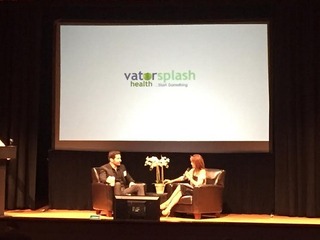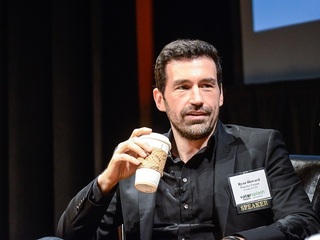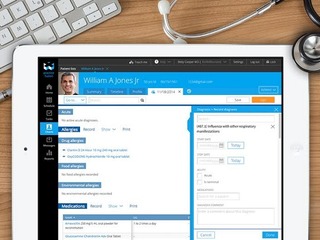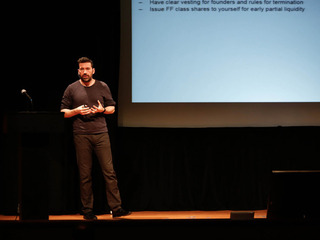Nao Medical adopts AI medical coding software XpertDox
Nearly $265B in claims are denied every year because of the way they're coded
Read more...
It's been less than a year since Ryan Howard stepped down as founding CEO of electronic health record company Practice Fusion, a company he ran for 10 years on the job. Since then he's been hard at work, developing a brand new company, one that is looking to tackle one of the nation's biggest health problems.
On Tuesday, he announced the launch of iBeat, a wearable technology company focused exclusively on heart health. The device perpetually monitors and analyzes users’ heart activity, allowing them to take a more active role in their heart health.
In an interview, Howard told me that iBeat is in a new category, one that the company has invented, called "wearable-as-a-service."
"It is, effectively, a smartwatch that can save your life, with 24/7 monitoring of your heart, and its many nuances. If your heart stops, or you have cardiac arrest, you have a 90 percent chance of dying. We will now take proper quick action," he explained. "If you get dehydrated, have a seizure, or fatigue, we do real time monitoring, and iBeat engages to make sure you're ok."
If the device detects that someone is wrong, and the user does not answer to say that they are alright, iBeat will then engage dispatch, calling them real time, along with the user's emergency contacts. That means that the wearer's friends and can family see where they they are in transit, so they can meet them as the hospital.
So, for example, someone might give it to their elderly parent, who would not have an emergency every day, but could now be monitored 24/7, sending data to the cloud about their heart. The device could show when their heart was stressed, when they exercised, and be able to tell when there is the potential for a bigger problem.
The original idea to start iBeat stemmed from the death of Marc Duntley, a childhood friend of Howard’s, who passed last year at the age of 40 during Thanksgiving.
"If you take take a step back, the single biggest killer in the U.S. is cardiac arrest. It's bigger than cancer," Howard said to me.
"The reality is that this is one of my mortal fears. I think about dying in my sleep once a week. We don't like to think about out it because it's scary subject. The fact that that happened to him, and that, of all my friends, he was in good shape, he was a goalie for a hockey team, put the fear right in front of me. I kept thinking, 'Could I have helped save him?' That was the genesis of the idea."
Another use case that Howard mentioned to me was particularly interesting, and it came from what he described as "a big, masculine guy, and man of few words," during a user trial. The man said that he was afraid that something would happen to him when he went mountain biking alone, and he wouldn't be able to make it back home to his family.
That led to the company devising a use case where people can wear iBeat and use it as an emergency call button. This can apply to situations that are non-medical one as well, such as if someone were breaking into their house.
When I brought up the fact that that sounded an awful lot like Life Alert, Howard explained the difference between the two devices, namely that they are going after separate demographics.
"They are really focused on the geriatric user, the 20 million that are 75 and older. We didn't want to build a Life Alert. Our user research shows that people who should be wearing devices won't because it dehumanizes them, or it makes them look and feel sick. As one of our potential users said, 'I don't want to wear a dog collar,'" he told me. "Our watch itself is super stylish, and is targeted those between the ages of 50 to 70, who haven't fallen. They want to be fearless and explore, but might be afraid of what might happen."
That also happens to be a much larger market to go after: there are 80 million people between the ages of 50 and 70 in the United States, and its a $24 billion market.
In addition, iBeat is less obtrusive than Life Alert, and it's cellular, while Life Alert is radio based, and sends no data to the cloud. Finally, there are no sensors on Life Alert, which passively monitors people, unlike iBeat, which will actively monitor their health.
That also separates it from every other wearable out there, including the Apple Watch, he said.
"The difference is that no one is monitoring you 24/7. The trackers that are out there, like Apple Watch, do heart health once every 15 minutes. They are checking for a pulse, but aren't doing anything with that data," Howard said. "The Apple Watch knows your resting heart rate, and tries to get you to be more active, but it does nothing if your heart stops."
Right now, iBeat currently has a prototype, and is working with Ammunition Design, which helped bring Beats to market. The company plans to start larger testing, with roughly 1,000 people, over the next few months, and hopes to go to market by April of next year.
In the meantime, it has done some seed funding, and plans to turn to crowdfunding in order to prolong its Series A round, which is something Howard is doing purposefully in order to avoid mistakes he has made in the past.
"That was the biggest lesson I learned at Practice Fusion, about giving up control too early," Howard told me about raising a new round of funding.
Another lesson he is taking with him from his previous company: don't try to work with the medical industry, or doctors.
"After Practice fusion, I myself never want to sell to doctors or payers again," he said. "At Practice Fusion, signing a healthcare company meant needing doctors, patients or the data, or more likely a combo of all three. We became the biggest, best place to achieve those things, through hundreds of deals, but it was impossible to say any of them would be successful. It slows things down and make everything more painful."
Due to all all the regulations involved, including from HIPPA and the FDA, Practice Fusion wound up with twice as many attorneys on staff than Box.
"It just sucked after a while, and was a terrible experience. It made it hard to innovate or do new things," he said.
Currently, iBeat has six team members, all of whom came from Practice Fusion, including Larry Stone, Brian Boarini, and Kristin Tinsley. As iBeat’s Lead Front-End Architect, Stone oversees software architecture and engineering. Boarini is focused on iBeat’s product and business development, and Tinsley, Practice Fusion’s former Senior Manager of Communications, is overseeing iBeat’s PR and marketing front.
"There are a ton of devices out there, including diabetic monitors and all point solutions, but cardiac arrest is the single biggest killer, and we want to dramatically impact that. We also want to add other diagnostics onto this, to cover other heart relate issues," Howard told me.
"The heart is compelling, because every lay person knows where the heart is. They know what it does, and knows it's mission critical. If it stops, you die. It's the only organ that people just understand."
Nearly $265B in claims are denied every year because of the way they're coded
Read more...Most expect to see revenue rise, while also embracing technologies like generative AI
Read more...The market size for 2023 was $10.31 billion
Read more...Startup/Business
Joined Vator on
Practice Fusion provides a free, web-based EMR system to physicians. With medical charting, scheduling, e-prescribing (eRx), lab integrations, referral letters, Meaningful Use certification, unlimited support and a Personal Health Record for patients, Practice Fusion's EMR the complex needs of today's healthcare providers and disrupts the health IT status quo. Practice Fusion is the fastest growing Electronic Medical Record community in the country with more than 150,000 users serving 40 million patients. The company closed a $23 million Series B round of financing led by Founders Fund in 2011. For more information about Practice Fusion, please visit www.practicefusion.com

Joined Vator on
Ryan is the founder, chairman and CEO of Practice Fusion. He founded the company in 2005 and has grown it into the largest physician-patient community in the US.